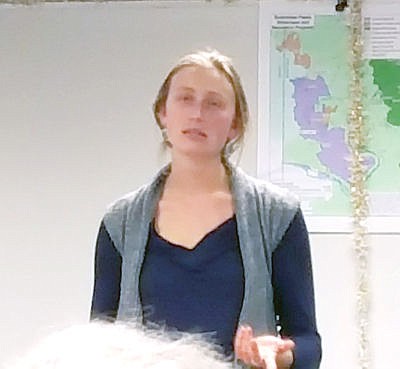Forest coalition adopts guidelines
A project more than seven years in the making took a major step forward Wednesday, as the board of the Kootenai Forest Stakeholders Coalition adopted forest management guidelines they hope will serve as a model for collaborative land management practices on the forest.
The coalition, comprised of representatives from industry, conservation groups, recreation enthusiasts, business owners, ecologists, fire management professionals and government agencies, set out more than seven years ago with a goal of defining areas of common ground with relation to the Kootenai National Forest and to develop guidelines under which the entire group would endorse projects on the forest.
“We’ve come a long way since the early days of this group,” said Lincoln County Forester and coalition member Ed Levert. “Originally, our objective was to try and reduce the number of appeals and litigation on timber sales, but we realized that we’d be much more effective as a diverse group if we reached an agreement on vegetative guidelines for the forest, motorized and non-motorized areas and wilderness. I see the agreement as a culmination of all that we’ve been building up to over the years.”
The group asserted five primary position statements, what group members labeled as “sideboards.” Projects, or parts of projects, falling within those sideboards would be endorsed and supported by the entire group as a matter of course. Projects outside those parameters would not necessarily be opposed by the group as a whole, but would be considered on a case-by-case basis by the collective. Group members present at Wednesday’s meeting stressed that the guidelines were not intended to be an edict to the United States Forest Service, but to be a resource to assist the agency find more efficiencies and streamline projects deemed to be within those areas of common ground.
The first position upon which the group agreed was the necessity for a comprehensive vegetative management program for the Kootenai National Forest.
“The Kootenai Forest Stakeholders Coalition endorses an ecosystem management approach to vegetative management on the Kootenai National Forest that promotes ecological integrity, along with resiliency for forest composition, structure, patterns and processes, while also balancing the social and economic needs of the forest,” the document read.
The second position advanced by the group was an endorsement of a sustainable timber management objective. The group called for sustained harvests of between 70 and 90 million board feet per year from nearly 800,000 acres of suitable timber land on the Kootenai. In addition to providing sound management of the timber lands, the group added the harvest must be consistent in order to accommodate the timber industry’s needs for a predictable supply of timber. The current forest plan calls for approximately 47.5 million board feet of saw log harvest per year.
“We encourage 70 mmbf to 90 mmbf of saw log to be annually harvested from these lands,” the document read. “We recognize and support that this number must be secured on a yearly basis to satisfy the predictability needs of the timber industry.”
In addition to the predictable supply of saw log harvest, the group also called for active timber management on lands designated as unsuitable for timber production. Such management, the group said, could result in additional timber products but would be aimed at objectives other than timber production, such as habitat management and restoration, fuels management and insect and disease mitigation. Timber harvested in such programs would be in addition to the proposed 70 to 90 million board feet of predictable timber.
The final two statements were focused on access and use of the forest as a whole, calling for specified areas of both motorized and non-motorized backcountry access as well as designated wilderness and recreation areas.
“We are in support of motorized and non-motorized backcountry areas, located primarily in inventoried roadless areas, where management objectives are focused on maintaining and enhancing recreation opportunities as well as wildlife habitat, security and connectivity for species with large home ranges,” the group members wrote in the document. “Mechanized use (including mountain bikes, game carts and other wheeled non-motorized equipment, as well as chainsaws) would be permitted within these areas, and motorized use would be permitted in designated motorized areas.
“The Kootenai Forest Stakeholders Coalition supports a balanced set of recommendations that include designated wilderness and designated motorized and non-motorized areas on the Kootenai National Forest. We are committed to finding common ground support for permanently protecting wilderness values as well as established uses in motorized and non-motorized recreation.”
The process of defining the areas of common ground and crafting a single document to embrace those areas was a long and arduous one, according to group members, but it was an exercise well worth the effort.
“It was a seven-and-a-half year root canal,” said Idaho Forest Group’s Tim Doherty, a member of the coalition. “But I’ve made a lot of good friends during this seven-year slog.”
The group unanimously approved the guidelines, noting it was just the first step in an even longer process of establishing a true collaborative management program for the Kootenai.
“We have a long ways to go,” Levert said. “Make no bones about it it.”
With effort and understanding, however, the group is confident they can continue to work together in the best interests of the forest and the people and communities living in and around it.
“There’s something really wrong if a diverse group of people can’t divvy up 2.2 million acres,” Doherty said.

